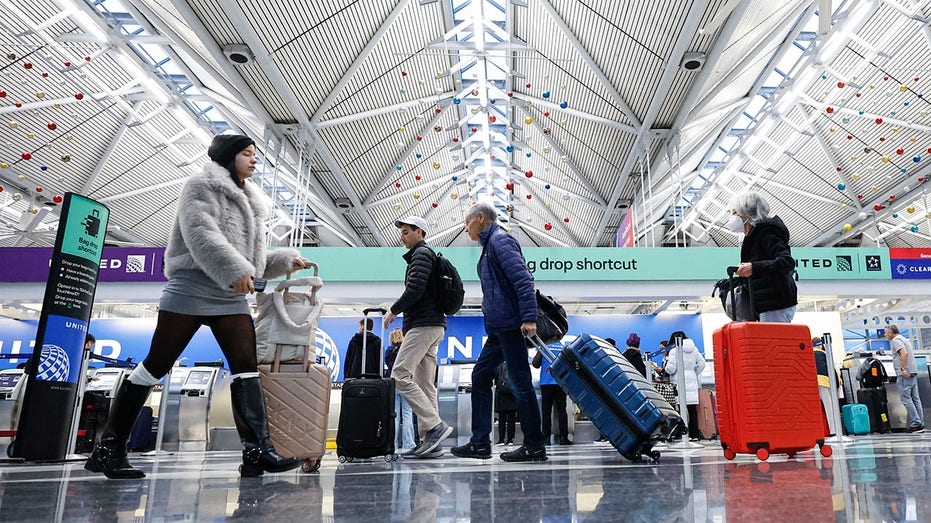Companies are bringing their employees back into the office — and sending them back on the road. The Navan Business Travel Index (BTI) shows business travel jumped 15% year-over-year. Additionally, the BTI showed a 54% increase in travel intensity since Q1 2023, the index’s baseline year.
Navan CFO Amy Butte conceived the idea for the BTI shortly after joining the company. When comparing data from Airbnb and major airlines to Navan’s numbers, Butte saw that they weren’t lining up. She realized that most companies do not differentiate between business and leisure travel, and there was no dedicated business travel data index — thus, Navan’s BTI was born.
“The launch of the Navan Business Travel Index provides a clear, detailed view of business travel activity on our platform, separated from the noise of consumer travel,” Butte wrote in a letter included in the BTI.
FALL IS NOW A PEAK TRAVEL SEASON, EXPERT SAYS
The Navan BTI is built on five core principles, which focus on robust data sources, a dynamic weighting system, a verified methodology, an accurate post-pandemic baseline, and Nasdaq validation.
The data points, drawn from millions of business transactions across more than 10,000 companies, track international and domestic airline bookings, hotel reservations and business expenses. Navan uses these data points and, through its dynamic weighting system, automatically adjusts for market volatility. Additionally, the methodology behind the index is “closely aligned with the Conference Board’s composite index approach,” according to the report.
Nasdaq Chief Economist Phil Mackintosh says the Navan BTI offers “a unique, data-driven look at how companies are investing in growth, relationships, and in-person collaboration.”
“This isn’t just travel data; it’s a window into corporate strategy and where the business travel industry is heading next,” Mackintosh said in the report.
Navan’s data revealed an inverse relationship between business and leisure travel. As holiday and seasonal travel goes up, business travel dips. Additionally, TSA data showed a 1% dip in overall travel, underscoring the emphasis companies are putting on face-to-face interactions.
The BTI notes that a comparison between Navan and TSA data reveals insights not only into how much people are traveling, but also why they are traveling at certain times. As the report states, business travel spikes correlated with corporate planning cycles and industry conferences.
“What I think is most fascinating about that rate isn’t the number alone, it’s the growth rate relative to all other travel,” Butte told FOX Business.
The business travel and expense management platform observed that companies are taking more opportunities to have their employees connect face-to-face with clients, colleagues and peers. Navan found that despite economic uncertainty, there was an uptick in individual trip indicators, such as car rentals and personal meals over team events.

SPIRIT AIRLINES WARNS IT MAY NOT SURVIVE ANOTHER YEAR
While there is overall growth in business travel, there are still differences among several industries. Butte told FOX Business that Navan saw growth in travel for the financial services (+31%) and media and entertainment (+25%) industries.
In contrast, the report showed nonprofit organizations (-5.1%), the hospitality and travel sector (-8.4%), and healthcare and life sciences companies (-15.2%) all reduced their travel spending. Government travel saw a modest 4.4% increase.
Navan states in its BTI that it aimed to prevent COVID from skewing the data presented in the report — a point Butte also emphasized to FOX Business. This awareness of how COVID travel restrictions could impact the data influenced where Navan chose to set its baseline for comparison.
“When we think about post-COVID, we look at 2023. As a CFO, as well as a public company board member, I actually think a post-Covid world almost demands more travel,” Butte said. “In some ways, our data is kind of reflecting the importance of, even if you work remotely, you still need to connect, and that can be with clients or colleagues.”

As Navan noted an overall growth in business travel, Butte pointed out that international travel grew more than domestic. In the BTI, Navan found that domestic hotel spending grew by 12%, while international grew by 17%, and Butte has a theory on why that is the case — and it has to do with U.S. policies.
“Our hypothesis is that companies may not be traveling as much to China, but maybe they’re traveling more as a way to find sourcing for manufacturing in other geographies. So, we’re not seeing the end to international travel. In contrast, we’re seeing companies kind of lean in to finding newer relationships,” Butte told FOX Business.
Butte doesn’t see the trend slowing down any time soon. Though she admits she is “bullish by nature,” Butte predicts that travel growth will continue, not just among large companies, but also among small and medium-sized businesses.
Read the full article here
















